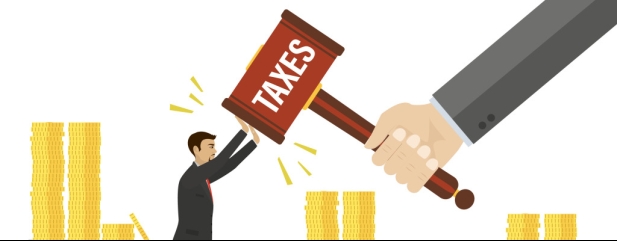Archived article
Please note that tax, investment, pension and ISA rules can change and the information and any views contained in this article may now be inaccurate.
How to beat the big UK wealth tax crackdown

Chancellor Jeremy Hunt launched a crackdown on wealth taxes in his Autumn Statement on 17 November. It means that from next year many people with investments outside an ISA or pension will face higher taxes, and from 2024 that tax hit will increase again. Here’s how to beat them.
WHAT’S CHANGING WITH DIVIDEND TAX?
Jeremy Hunt revealed that from April 2023 the tax-free allowance for dividends will be cut from the current £2,000 to £1,000. Then from April 2024 it will be cut again to £500. Also remember that dividend tax rates rose in April this year and that increase will remain. So a basic-rate taxpayer will pay 8.75%, higher-rate taxpayer will pay 33.75% and an additional rate taxpayer will pay 39.35%.
WHAT’S THE IMPACT?
It means that someone with £2,000 of dividends will go from paying no tax this year (as they are covered by the tax-free allowance) to paying up to £393.50 in tax from next year and £590.25 in tax from April 2024.
HOW CAN I BEAT IT?
The answer is ISAs and pensions. Clearly a pension is a longer-term play, so an ISA might be more suitable if you want to keep access to the money. But anyone with any of their £20,000 ISA allowance left this year should consider a ‘Bed and ISA’, where you sell investments from a dealing account and immediately re-buy them in your ISA.
If you have a spouse who hasn’t used up their ISA allowance this year you could transfer the investments to them (which will be tax free) and then they re-buy them in their ISA. (This also has a capital gains tax perk, see below).
However, if you have a large portfolio outside tax-wrappers it could take you multiple years to move it into your ISA. If that’s the case, you’ll need to be savvy about what you move first. List out your investments by the amount of money in dividends they pay out each year. You’ll then want to move the ones with the highest monetary pay out into your ISA first, as they will take up a bigger chunk of your tax-free allowance. This might not be the biggest holding.
For example, Investment A is worth £10,000 but yields 2% each year, meaning it pays out £200 in dividends, but Investment B is worth £5,000 but yields 6%, paying out £300 in dividends a year. In this case you’d want to move Investment B into your ISA first, even though it’s the smaller investment, because it pays out a higher income.
WHAT’S CHANGING WITH CAPITAL GAINS TAX?
Much like with dividend tax, the Government has cut the tax-free amounts on CGT (capital gains tax). Currently you can bank £12,300 of capital gains in a year without paying tax, this will be cut to £6,000 in April next year and £3,000 in April the year after. There are four rates of CGT, ranging from 10% up to 28%, depending on your income tax band and whether it’s for a property or not.
WHAT’S THE IMPACT?
From next year a basic-rate taxpayer with gains above the current tax-free limit will pay an extra £630 in tax, rising to £930 in 2024. For higher and additional-rate taxpayers that increase will be £1,260 rising to £1,860 in April 2024. That’s assuming the gain is not for a property (which attract a higher rate of CGT) otherwise the increase for an additional-rate payer will be £2,604 by 2024.
HOW CAN I BEAT IT?
There are lots of ways to beat CGT and keep your money from the taxman’s clutches. The main thing this year is that you want to use up your CGT allowance if you can, before it’s cut next year. If you have any ISA allowance remaining you could bank gains in a dealing account up to your tax-free limit this year and then move them into your ISA. This ‘Bed and ISA’ process means that your investment will no longer be subject to tax.
Another option is to move the money to your spouse, if they have any CGT limit left. Transfers to spouses aren’t subject to CGT, but if they then sell the investment the gain will be based on the price that you bought it for and the price they sell it for (not the value when you transfer it to them). If they have any ISA allowance left this year they can also do a Bed and ISA with the money to keep it from the taxman’s clutches in the future.
If you’re without any ISA allowance you could consider selling the asset to realise the gain up to this year’s limit and then buying it back. The tax rules around this mean you have to rebuy the shares 30 days after you sell them – so this carries a bit of risk as you don’t know what the share price will do in that time. But it’s a canny way to lock in gains if you don’t mind that risk. Alternatively, if you have a partner they can buy the shares back the day after you dispose of them.
If you have losses on any of your assets you could use them to offset your capital gains. Even if you don’t have any gains this tax year, you can carry forward losses to use from previous years. This could be particularly useful in future, as it will help to counteract the lower CGT limit. However, in order to use a loss in the future you’ll need to report it to HMRC. If you don’t fill out a self-assessment return you can write to HMRC to tell them about it instead. You have up to four years to claim for a loss, so there is no immediate hurry.
Important information:
These articles are provided by Shares magazine which is published by AJ Bell Media, a part of AJ Bell. Shares is not written by AJ Bell.
Shares is provided for your general information and use and is not a personal recommendation to invest. It is not intended to be relied upon by you in making or not making any investment decisions. The investments referred to in these articles will not be suitable for all investors. If in doubt please seek appropriate independent financial advice.
Investors acting on the information in these articles do so at their own risk and AJ Bell Media and its staff do not accept liability for losses suffered by investors as a result of their investment decisions.
Issue contents
Feature
Great Ideas
News
- New life sciences investment company seeks to take advantage of depressed UK valuations
- Find out what China’s protests and latest Covid plans mean for stocks
- Why no-frills Costco Wholesale continues to flourish
- Retail sector breathes sigh of relief as Black Friday sales top expectations
- Card Factory bucks the negative retail sector trend with share price surge
- Shares in Home REIT are down hard on short-selling report

 magazine
magazine








